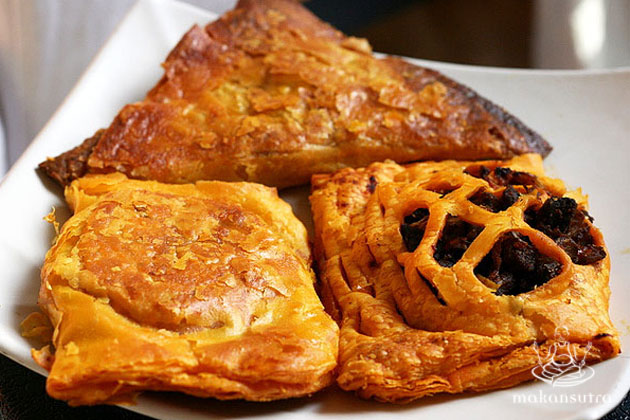
How Old Is The Curry Puff?
By Catherine Ling - Friday, Feb 26, 2016
The good ol’ and well-loved Singapore style Curry Puff
How many curry puffs have you had in your life? Probably quite a few. Ever stopped to wonder how and when this popular street food snack was invented?
We have several different types in Singapore: the “epok epok” sold by Malays (usually small and deep-fried, with a thinner crunchier dough crust); the larger and thicker shortcrust “curry puff” with boiled egg slice and curried potato popularised by the Chinese; and then we have the Indian triangular or rectangular flaky puffs that are baked and affectionally called “kali pap”.

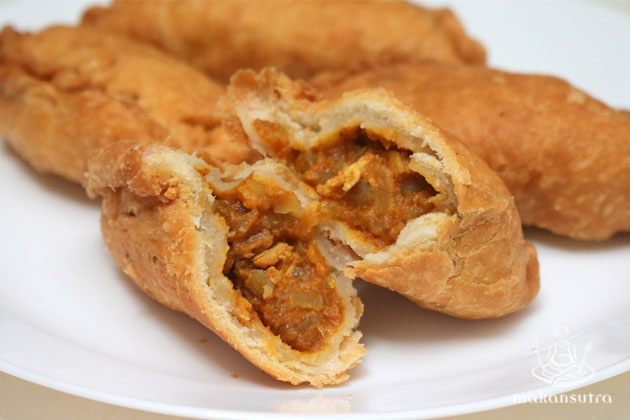
Cornish Pasties have been around since the 1300s.
We are all a little hazy on when this ubiquitous snack began but theories abound on how it came about. Some see its resemblance to the Cornish pasty that the British introduced (it’s a semi-circular baked pastry crimped on the round side, filled with meat, onion, turnip and potatoes).
Pasties themselves have been mentioned in cookbooks as far back as the 1300s. It was eaten by the working class (convenient portable food) and royalty alike. It’s been speculated that the crimped side was for miners to hold while they eat, and to be discarded, so they don’t ingest any toxic elements from their dirty fingers. But they were also eaten whole when wrapped in a paper bag.
Although associated with India, these samosas are not indigenous to the Indians
The curry puff also has a similar cousin in the samosa. You’ll be surprised to know the samosa is not indigenous to India. Early medieval Persian texts mention the “sanbosag” (etymologically similar to “samsa”, meaning pyramid). Traders from the Middle East and Central Asia brought the “sambosa” to India, and the Indians added their own spices, and also made it vegetarian in some parts.
Then there is the empanada which came from Portugal and Galicia in northwestern Spain, and spread to Latin America. These were also influenced by the samosa, so they share the Middle Eastern roots.
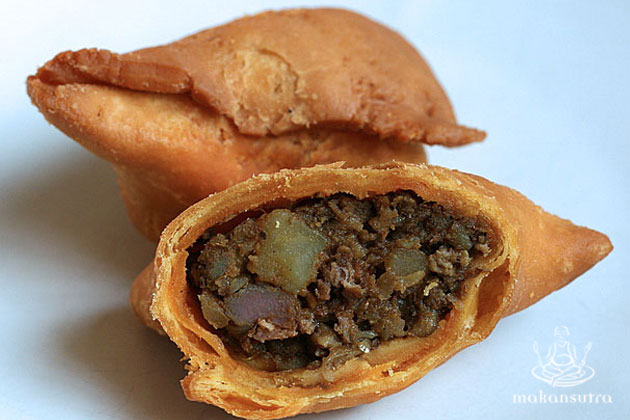
These baked puffs from Polar Puffs was first introduced in 1926.
In Singapore, Polar Puffs is one of the oldest known baked curry puff businesses, having started in 1926. That makes it a grand 90 years old this year. Their creation marries the Western style of flaky puff pastry with Indian curry. Mr Chan Hinky who moved here from Hong Kong started a cafe at High Street. It was one of the few businesses that was allowed to continue during the Japanese occupation. What can you say? Good food must be the key to world peace.
The Straits Times rated Polar as the best in a blind taste test of 50 curry puffs. It’s so popular in the newsroom that new reporters once had to buy everyone Polar puffs when they got their first byline.
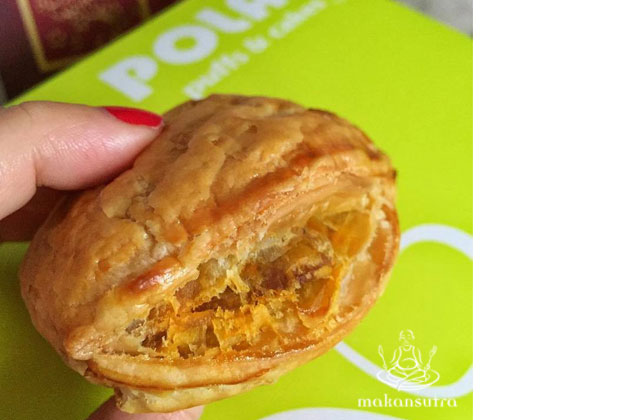
To commemorate their 90th anniversary, Polar introduced a potato puff that’s meatless. Previously their chicken curry puff contained no potatoes at all. While their baked flaky puffs are certified halal, they bear no resemblance to the Malay epok epok.
The sardines epok epok.
Malay ladies used to sell epok epok door to door to make a living, especially after the war. Epok epok fillings can include “kentang” (potato) or “sardin” (sardines in tomato, chilies and onions). There is a “sayur” (vegetables) version that’s harder to find; it has bean sprouts, carrots, chives and sometimes firm tofu or shrimp. Epok epok was often served with a sweetish spicy-sour sauce, but sometimes that is done away with these days.
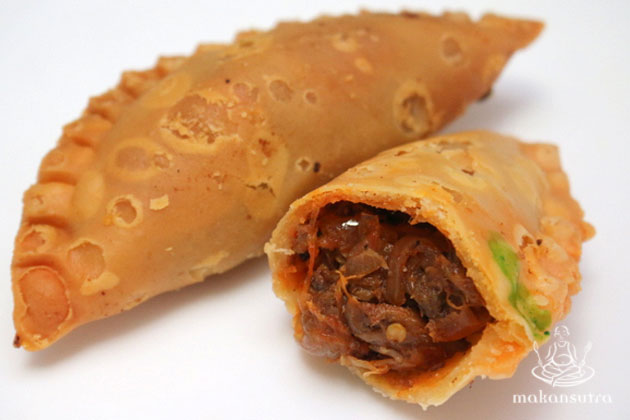
It’s reputed that the Chinese adapted these to create the modern day curry puff like the ones by Old Chang Kee. A quartered slice of boiled egg was added to the curry potato filling.
Newer incarnations of the curry puff include those with multi-layered flaky skin like those popularised by 1A Curry Puff. Some of these are called “karipap pusing” or spiral curry puffs. The fillings also have become more varied over the years – otah, chili crab, black pepper chicken, yam, durian, custard, and red bean.
No matter how or when it started, the appeal of the curry puff and all its cousins looks set to stay. Don’t you feel like having one now?


